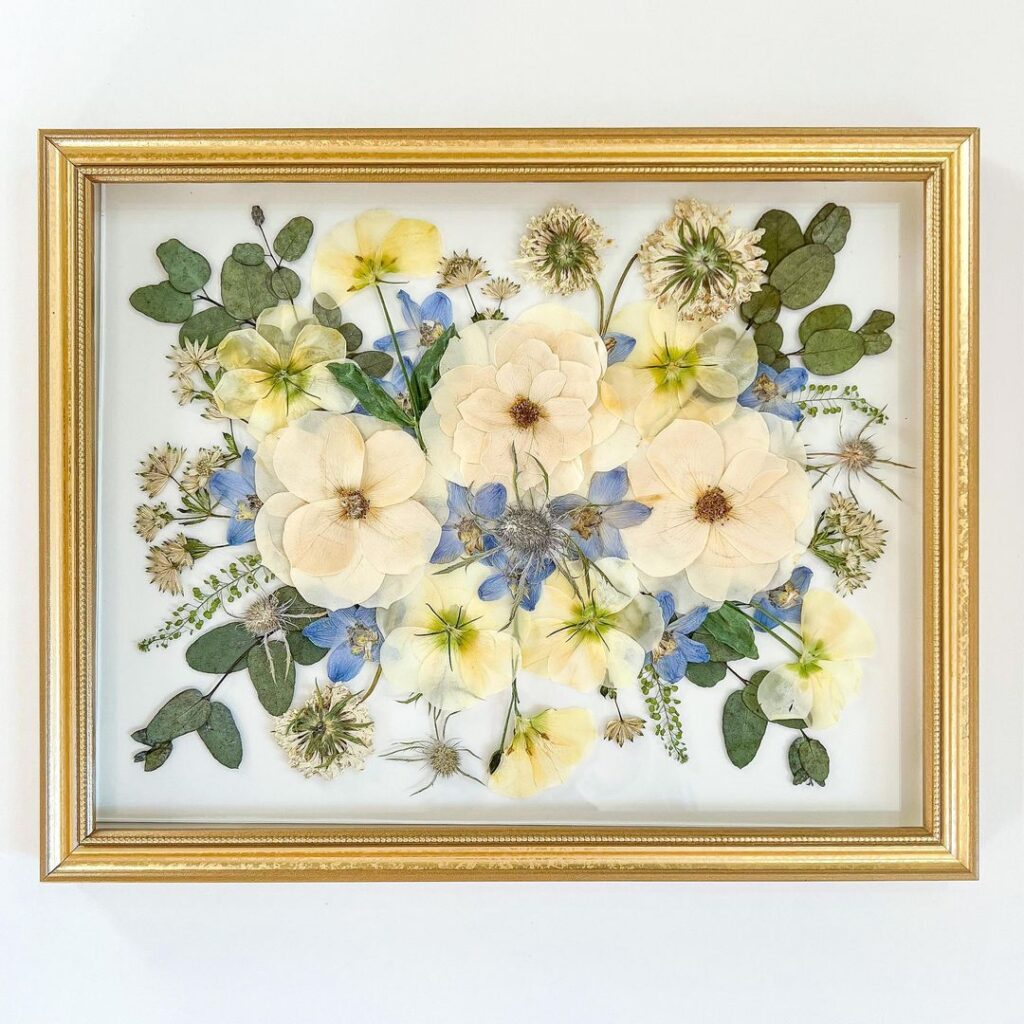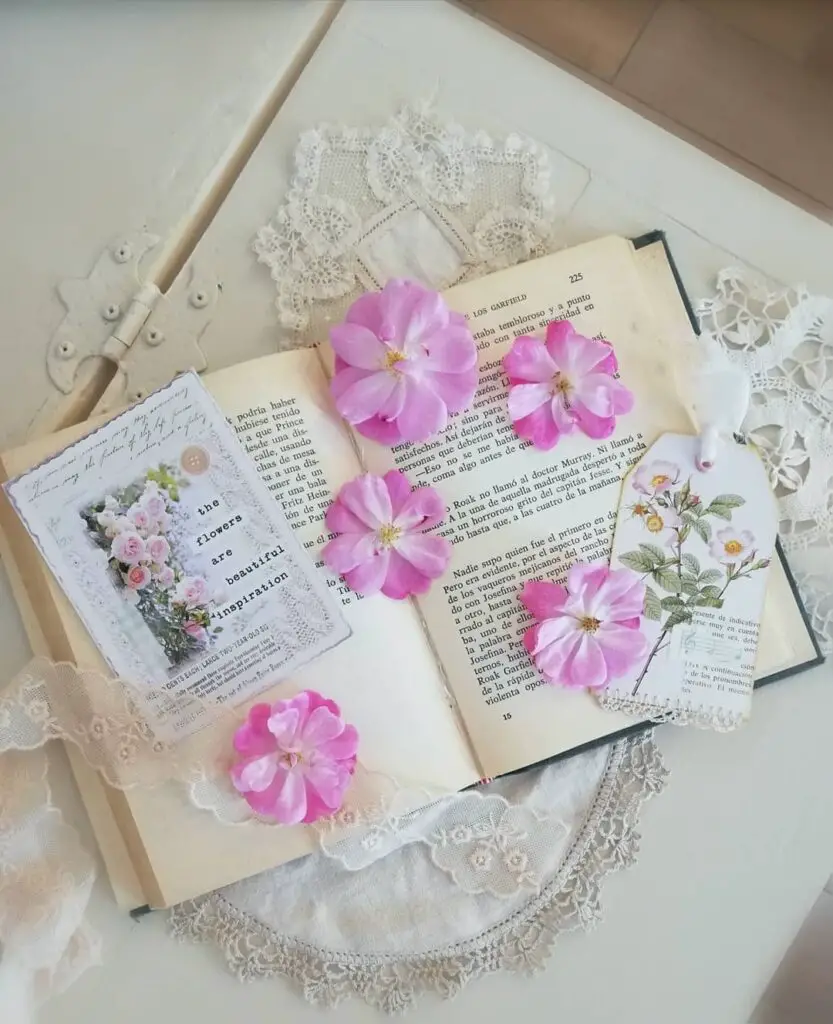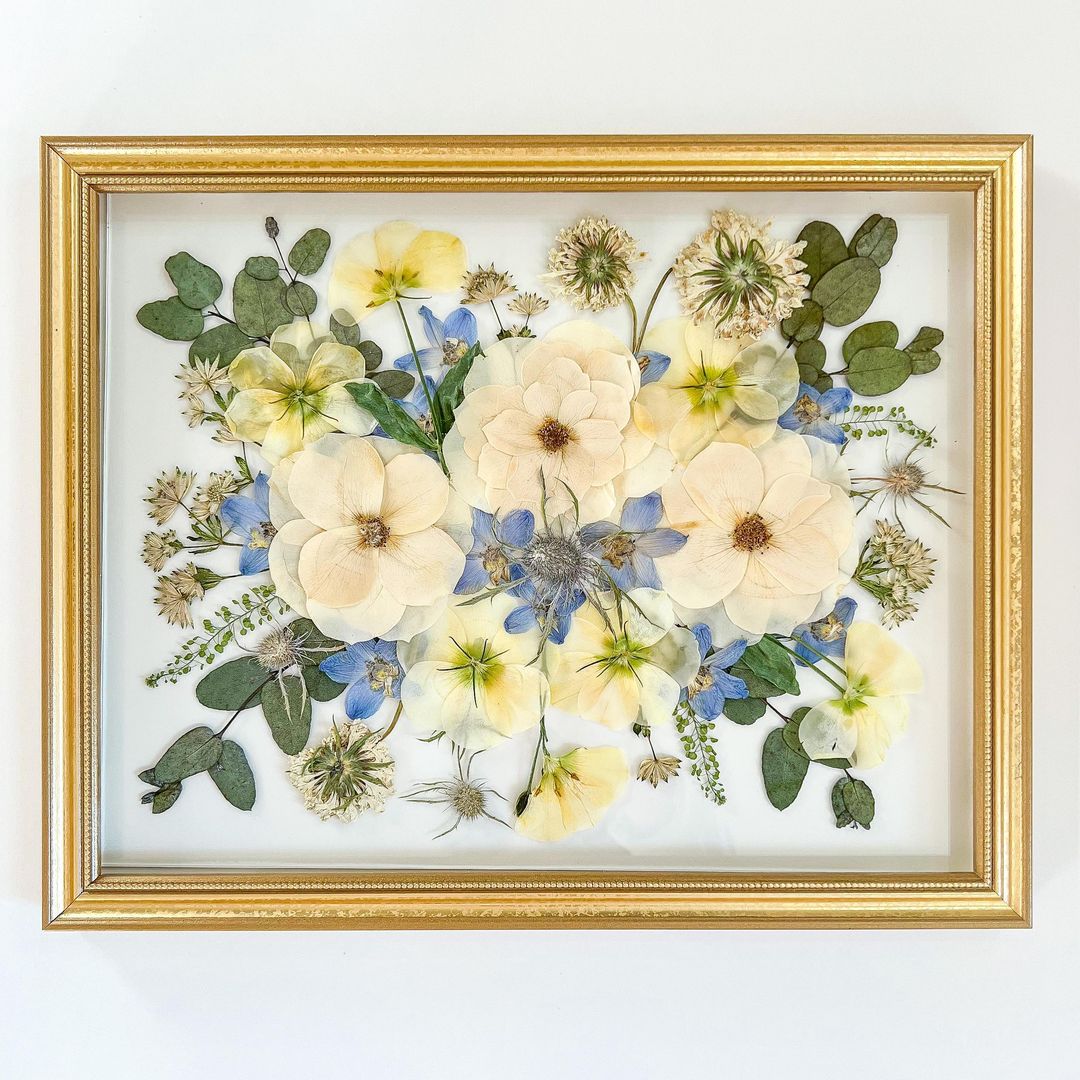Roses, with their delicate beauty and intoxicating fragrance, are timeless symbols of love and elegance. Imagine capturing their charm forever by pressing them into beautiful keepsakes. Whether you’re preserving a cherished memory or creating art, learning how to press roses opens a world of creative possibilities. This age-old technique, passed down through generations, transforms fresh blooms into lasting treasures that can adorn journals, frame-worthy art, and more.
Pressing roses is both an art and a science. The process, while simple, requires patience and care to maintain the vibrancy and structure of the petals. In this guide, we’ll explore the steps to ensure your roses retain their beauty and grace. From selecting the perfect blooms to the best pressing methods, you’ll discover the secrets to turning these floral wonders into timeless mementos. Ready to unlock the magic of pressed roses? Let’s dive in and create something extraordinary.

How To Press Roses and Preserve It?
We’ll discuss the topic step by step. So, bear with us, and let’s dive into it:
Is It Possible to Press Roses?
Yes, you can press roses. Pressing roses is a straightforward process that preserves their beauty and sentimental value. While not all rose varieties are equally suited for pressing, many, like Floribunda and Polyantha roses, press well due to their smaller blooms and fewer layers of petals. Freshness is key, so using roses soon after they bloom ensures better results.
To press a rose, trim the stem close to the base and place the flower between two sheets of absorbent paper. Then, sandwich the paper between heavy books or use a flower press to apply even pressure. It typically takes two to three weeks for the roses to dry completely. Regularly changing the absorbent paper during this period helps prevent mold and ensures thorough drying.
Pressed roses can be used in various crafts, such as greeting cards, bookmarks, or framed art, making them cherished keepsakes for years to come.

Essential Tools for Pressing Roses
To press roses effectively, you need the right tools to ensure the flowers retain their beauty and structure. Here are the essential items you’ll need:
- Fresh Roses: Select roses at their peak bloom for the best results. Ensure the petals are dry and free from dew or rain.
- Flower Press or Heavy Books: A flower press is ideal for even pressure distribution, but heavy books can work as an alternative. A flower press can be purchased for around $15-$30.
- Blotting Paper or Parchment Paper: These materials help absorb moisture and protect the roses during pressing. Blotting paper is more efficient, but parchment paper is a good substitute. You can buy blotting paper packs for approximately $10.
- Cardboard: Used to create layers between the roses, blotting paper, and press. Ensure the cardboard is clean and cut to the size of the press or book.
- Tweezers: Useful for positioning petals and leaves without causing damage. A good pair of tweezers costs around $5-$10.
- Scissors or Pruning Shears: To trim the stems and remove excess foliage. Quality pruning shears are priced at about $10-$20.
- Weights or Additional Books: If you’re using heavy books instead of a press, additional weights ensure adequate pressure is applied.
- Notebook or Journal: For recording the date and type of roses pressed, and any notes on the process or results.
With these tools, you’ll be well-equipped to press roses successfully, preserving their beauty for years to come.
Expert Tips for Pressing Roses
Pressing roses is a delicate process that can preserve their beauty for years. Follow these expert tips to ensure the best results.
Select Fresh Blooms
Choose roses that are just beginning to open and have no blemishes. Fresh flowers with intact petals will press more evenly and maintain their color better. Ideally, pick roses early in the morning when they are most hydrated.
Prepare the Roses
Remove any unwanted leaves and thorns. Trim the stems to about half an inch. If the petals are thick, consider splitting the rose in half to ensure a flat press. Lay the roses flat on absorbent paper, such as parchment or blotting paper.
Pressing Method
Place the prepared roses between two sheets of paper and then place them inside a heavy book. Weigh down the book with additional heavy objects for added pressure. Leave the roses in the press for at least two to four weeks to ensure they dry completely.
Avoiding Mold
To prevent mold, change the blotting paper every few days during the first week. Ensuring the flowers are not too thick will also help reduce moisture that can cause mold.
Checking Progress
After two weeks, carefully check the roses. If they are not fully dry, replace the paper and continue pressing. Well-dried roses should feel papery and brittle.
Preservation
Once the roses are fully pressed and dry, you can spray them with a light mist of hairspray or a floral sealant to preserve their color and structure. Store the pressed roses in a cool, dry place away from direct sunlight to prevent fading.
By following these steps, you can successfully press roses and create beautiful, lasting keepsakes.
1) How to Press Roses with a Flower Press
Pressing roses using a flower press is a straightforward and effective method to preserve their natural beauty. Here’s how to do it:
Selecting the Roses
Choose fresh roses that are in full bloom but not overly mature. Opt for flowers with vibrant colors and healthy petals. Cut the roses early in the morning when they are well-hydrated.
Preparing the Roses
Carefully remove any excess foliage and thorns from the stems. If the roses are large, you may want to disassemble the blooms, pressing each petal individually for better results.
Using the Flower Press
Place the roses between two sheets of absorbent paper, such as blotting paper or parchment paper. Position these sheets in the middle of the flower press, ensuring they are flat and not overlapping. Tighten the screws of the press to apply even pressure across the roses.
Drying Time
Leave the roses in the press for about 2 to 4 weeks. The exact time depends on the thickness of the petals and the humidity levels in your environment. Check periodically to ensure they are drying evenly.
Final Touches
Once fully dried, remove the roses from the press carefully to avoid damaging the delicate petals. Your pressed roses are now ready to be used in various crafts or as beautiful keepsakes.
2) How to Press Roses with a Book

Pressing roses with a book is a timeless and straightforward method that requires minimal materials. Here’s a step-by-step guide to ensure you achieve beautiful, flat blooms every time.
First, select fresh roses that are not fully open. This prevents the petals from becoming too fragile. Ideally, choose roses with petals that are just starting to unfurl.
Next, prepare your book. A thick, heavy book, like a dictionary or a large encyclopedia, works best. Line the pages with parchment or wax paper to protect both the book and the roses. This prevents moisture from damaging the book’s pages and ensures the roses press flat.
Carefully place the roses between the lined pages. Arrange the petals as desired, ensuring they don’t overlap too much. Close the book gently to avoid crushing the petals. For added weight, stack additional books or other heavy objects on top.
Leave the roses to press for about two to four weeks. Check them occasionally to ensure they’re drying properly. Once fully pressed, they should feel papery and dry to the touch.
Using this method, your pressed roses can be used in various crafts, from bookmarks to framed art. Enjoy preserving the beauty of your roses with this simple yet effective technique.
3) Ironing Roses: A Step-by-Step Guide
Pressing roses using an iron is a quick and effective method to preserve their beauty. Here’s how you can achieve stunning results with this technique.
First, gather your materials: fresh roses, an iron, wax paper, a heavy book, and a flat surface. Begin by selecting roses with minimal blemishes and fully opened blooms. Trim the stems, leaving only the petals or a short stem section.
Place the rose between two sheets of wax paper. This prevents the iron from directly touching the petals, protecting their color and texture. Set your iron to a low, dry heat setting—no steam is necessary. Preheat the iron for about five minutes.
Once the iron is ready, place the wax paper-enclosed rose on a flat, heat-resistant surface. Press the iron gently on the wax paper for 15-30 seconds. Avoid moving the iron to prevent the petals from shifting. Lift the iron, allow the wax paper to cool slightly, and then check the rose. Repeat the process if necessary, but be cautious not to overheat and burn the petals.
After ironing, place the pressed rose in a heavy book for additional flattening and drying. Leave it undisturbed for at least a week. This final step ensures the rose is completely dry and maintains its pressed form.
By following these steps, you can quickly and effectively preserve the natural beauty of roses, creating exquisite keepsakes to cherish or use in various crafts and artworks.
4) Quick and Efficient: Pressing Roses with a Microwave Press
Pressing roses with a microwave press is a swift and effective method to preserve their beauty. Unlike traditional pressing, which can take weeks, the microwave press technique can achieve stunning results in just minutes. This modern method harnesses the power of microwave energy to quickly dry and flatten the roses while maintaining their vibrant colors and delicate shapes.
Materials Needed:
- Fresh roses
- Microwave press (available at craft stores)
- Paper towels or blotting paper
- Microwave
Steps to Follow:
- Prepare the Roses: Select fresh roses that are free of blemishes and fully bloomed. Remove any excess foliage and trim the stems to about an inch in length.
- Position the Roses: Place the roses between two sheets of blotting paper or paper towels. Ensure the petals are spread out evenly and not overlapping.
- Setup the Microwave Press: Assemble the microwave press according to the manufacturer’s instructions. Place the prepared roses inside the press.
- Microwave Process: Insert the press into the microwave. Heat on medium power for 30 to 60 seconds. The exact time may vary depending on your microwave’s wattage and the moisture content of the roses. Start with shorter intervals to prevent scorching.
- Check and Adjust: After the initial heating, carefully open the press to check the roses. If they are not fully dry, continue microwaving in 10-second increments. Ensure you monitor closely to avoid over-drying.
- Cool and Finalize: Once the roses are dry and flattened, remove them from the press and allow them to cool. They are now ready to be used in various crafts or as keepsakes.
This method is perfect for those who need quick results without compromising on quality. By following these steps, you can enjoy beautifully pressed roses in a fraction of the time it takes with traditional methods.
# How to Press Rose Petals

Pressing rose petals is a delicate process that requires precision to preserve their natural beauty. Here’s a step-by-step guide to help you create stunning pressed roses:
1. Selecting the Roses:
Choose roses that are fresh and free from blemishes. Ideally, pick them in the morning when they are at their peak. Hybrid tea roses, with their large, single blooms, and compact size, are excellent choices for pressing.
2. Preparation:
Gently remove the petals from the roses, ensuring they are clean and dry. Place them between layers of absorbent paper, such as blotting paper or coffee filters, to help wick away moisture during the pressing process.
3. Pressing Method:
Arrange the petals in a single layer between two sheets of absorbent paper inside a heavy book or a flower press. Place additional weight, like more books or a heavy object, on top to apply even pressure.
4. Pressing Time:
Leave the roses pressed for 1-2 weeks in a cool, dry place. Check periodically to ensure they are drying evenly and replace the absorbent paper if it becomes damp.
5. Finishing Touches:
Once pressed and dried, carefully remove the petals from the paper. Use them to decorate greeting cards, create botanical art, or preserve them in a frame for a lasting keepsake.
Pressing rose petals not only preserves their delicate beauty but also allows you to create personalized crafts and décor that celebrate the timeless elegance of roses.
## Pressing Rose Heads and Stems

Pressing rose heads and stems is a delicate process that preserves their beauty and structure for various artistic and decorative purposes. Here’s a precise guide on how to achieve the best results:
Preparing the Roses:
Before pressing, choose roses that are fresh and free from blemishes. Ideally, pick them in the morning when their moisture content is lower, aiding in faster drying. Remove any damaged petals or leaves to ensure a clean appearance.
Pressing Methods:
For optimal results, place the rose face down on absorbent paper, such as blotting paper or parchment. Arrange the stem and leaves neatly alongside the flower head. Ensure there is enough space between each rose to prevent overlapping, which can cause uneven drying.
Pressing Technique:
Apply gentle pressure by placing heavy books or a flower press on top of the arranged roses. Avoid pressing too hard to prevent crushing the delicate petals. Leave the roses pressed for about 1-2 weeks in a dry, ventilated area. Check periodically to ensure they are drying evenly.
Final Touches:
Once dried, carefully remove the pressed roses from the paper. Use them for various crafts like card-making, framed art, or as decorative accents in scrapbooks. Store pressed roses in a cool, dry place away from direct sunlight to maintain their color and shape over time.
Pressing roses combines the art of preservation with creative expression, allowing you to capture their beauty in timeless forms.
Additional Tips for Pressing Roses
Pressing roses is a delicate art that preserves their beauty for years to come. Here are some additional tips to ensure your pressed roses turn out perfectly:
Choose Fresh Blooms: Select roses that are just blooming or slightly open. Avoid roses that are fully matured or beginning to wilt, as they may not press well.
Prepare Petals Carefully: Before pressing, gently remove any excess moisture from the petals using a paper towel. This helps prevent mold and ensures faster drying.
Optimal Pressing Time: The ideal pressing time for roses is typically between two to four weeks. Check periodically to ensure the petals are fully dried and flattened.
Use Absorbent Paper: Place the rose between layers of absorbent paper, such as blotting paper or parchment, to help draw out moisture evenly and maintain color.
Weight Distribution: Distribute weight evenly on top of the pressing layers to avoid uneven flattening. Books or a dedicated flower press can be used for this purpose.
Final Touches: Once pressed, handle the roses with care to avoid damaging the delicate petals. Store them in a cool, dry place away from direct sunlight to preserve their color and shape.
By following these tips, you’ll master the art of pressing roses and create stunning botanical keepsakes that capture the essence of these timeless flowers.
What to Do with Your Pressed Roses
Once you have beautifully pressed roses, you might wonder how best to showcase or utilize them. Here are some delightful ideas:
1. Decorative Art: Pressed roses make stunning additions to various art projects. Frame them individually or arrange them in a collage to create wall art that preserves their natural beauty. They also complement handmade cards and invitations, adding a touch of elegance to special occasions.
2. Keepsake Books: Incorporate pressed roses into scrapbooks or journals to capture memories in a unique and artistic way. Use them to highlight special events such as weddings, anniversaries, or birthdays. Their delicate petals add a tactile and visual dimension to personal storytelling.
3. Home Décor: Integrate pressed roses into your home décor by placing them under glass in trays or using them to embellish candles and lampshades. Their timeless charm enhances any room, bringing a touch of nature indoors.
4. Gifts: Create thoughtful gifts by incorporating pressed roses into handmade bookmarks, coasters, or jewelry. These personalized items carry a sentimental value that’s sure to be cherished by the recipient.
5. Botanical Studies: Pressed roses are invaluable for botanical studies and educational purposes. They provide a preserved sample of floral anatomy, perfect for illustrating textbooks or personal collections.
With these creative ideas, your pressed roses can be enjoyed and admired in various ways, ensuring their beauty lasts for years to come.
How Long Do Pressed Roses Last?
Pressed roses can retain their beauty for a surprisingly long time, making them ideal for preserving special memories. When properly prepared and stored, pressed roses can last anywhere from several months to several years. The longevity largely depends on how well they are treated during the pressing and preservation process.
1. Proper Preparation:
To ensure longevity, start with fresh, dry roses. Choose blooms that are fully open but not overly mature. Remove excess moisture by pressing them between absorbent paper or using a flower press.
2. Storage Conditions:
Store pressed roses in a dry, cool environment away from direct sunlight. Excessive heat and humidity can cause them to deteriorate faster. Placing them in a frame under glass can provide additional protection from dust and moisture.
3. Lifespan Expectancy:
On average, well-pressed roses can maintain their color and shape for about 1-2 years. Some varieties and techniques, such as using silica gel for drying, can extend this lifespan up to 5 years or more.
4. Display and Handling:
Handle pressed roses gently to avoid damaging their delicate petals. Avoid touching them frequently, as oils from fingers can cause discoloration over time. Displaying them in a shadow box or between acid-free paper can help preserve their beauty.
5. Monitoring and Maintenance:
Periodically check pressed roses for any signs of discoloration or deterioration. If stored properly, they can continue to bring joy and beauty long after their fresh counterparts have faded.
Understanding these factors can help you maximize the lifespan of your pressed roses, ensuring they remain a cherished keepsake for years to come.
Frequently Asked Questions
How do you choose the best roses for pressing?
Select roses that are freshly bloomed but not overly mature. Look for blooms that are free from blemishes or damage, and choose varieties with petals that lie flat and are not too thick.
What is the best method for pressing roses?
The traditional method involves placing blooms between absorbent paper inside a heavy book. Pressing machines designed for flowers are also effective, ensuring even pressure and quicker drying.
How long does it take to press roses?
The time needed varies based on humidity levels and the thickness of the petals. Generally, it takes between one to three weeks for roses to dry completely when pressed between absorbent paper.
How can you prevent roses from losing their color when pressed?
To maintain color, press roses as soon as possible after picking. Keep them out of direct sunlight during the pressing process, and consider using a flower press or microwaving them briefly before pressing to set the color.
Conclusion
Preserving roses through pressing is a delightful way to capture their beauty indefinitely. By carefully selecting blooms and employing proper pressing techniques, you can create stunning decorations and cherished keepsakes.
Whether you’re embarking on a creative project or preserving a special bouquet, the art of pressing roses offers a timeless way to celebrate their elegance. Embrace this age-old practice to turn fleeting moments into enduring pieces of art, bringing the allure of roses into your daily life with every delicate petal preserved.

I’m Shofi, a passionate gardener and blogger. I have 10+ years of experience in gardening and hold certifications in horticulture and garden design. I share my knowledge and skills through my garden blog to inspire and educate others on the joys of gardening. I try to provide valuable information and create a community for gardeners of all levels to connect and learn. My ultimate goal is to inspire others to start their own gardens and connect with nature.

